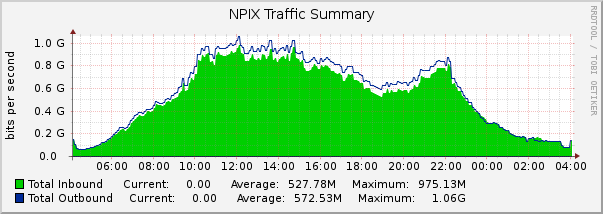ISC F root server - IPv6 issue at NIXI Chennai
Last week I noticed that F root was showing poor connectivity with Indian RIPE Atlas probes for F-root. The graph looked really terrible.

Telekom Germany
I traced to it from one of RIPE Atlas probes and saw this trace:
Probe #6107
1 2401:7500:fff0:1::1 0.838 ms 0.747 ms 0.632 ms
2 2400:5200:1c00:d::1 1.755 ms 1.745 ms 1.726 ms
3 2403:0:100::2be 2.089 ms 2.054 ms 2.049 ms
4 2404:a800:2a00::13d 45.589 ms 26.274 ms 33.64 ms
5 2404:a800::178 26.376 ms 25.406 ms 25.276 ms
6 2001:de8:1:2::3 25.363 ms 25.232 ms 25.223 ms
7 * * * *
8 * * * *
9 * * * *
10 * * * *
11 * * * *
Here the last hop before timeout i.e hop 6 is of NIXI Chennai peering subnet 2001:de8:1:2::/64. As soon as I saw it, it reminded me older issue which happened and broke IPv4 connectivity to root DNS servers. I blogged about it here, here and here. So the problem remains that NIXI is broken cost wise due to charge on in - out policy. This leads to people accepting routes at all NIXI’s but they do not announce their routes. Thus return path is broken and essentially traffic is being blackholed. Earlier this issue was fixed by adding IP transit support to these root DNS servers so that a default route stays in case of all other failures. It seems like same is missing in IPv4 world and routes are not being announced. During this time, I saw two BGP sessions at NIXI Chennai for F root:
